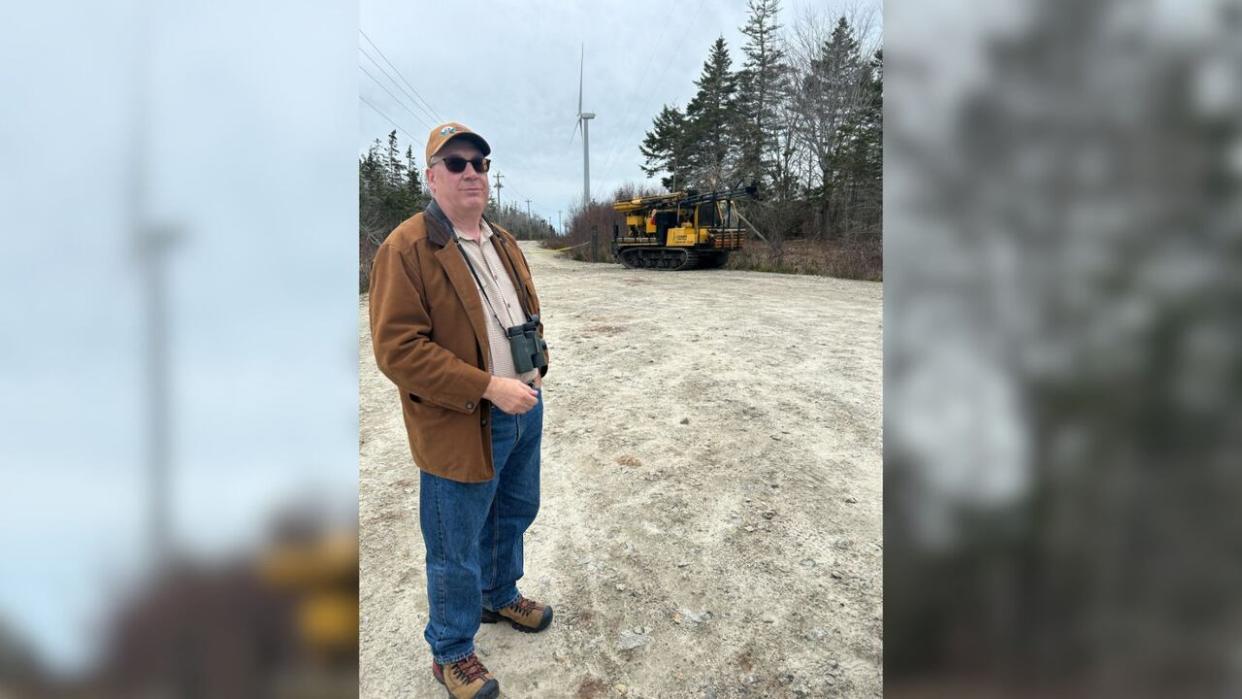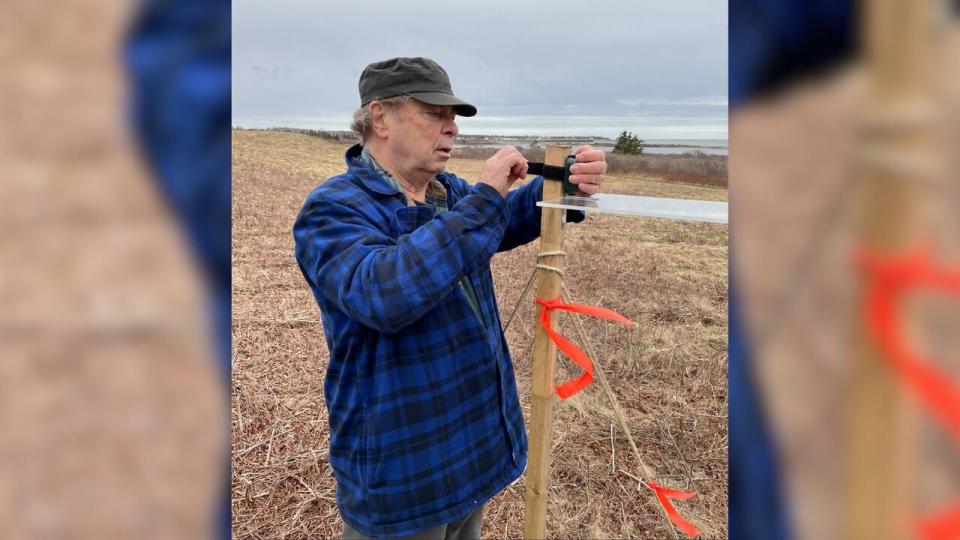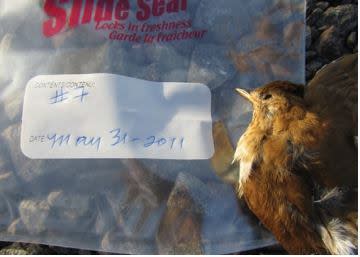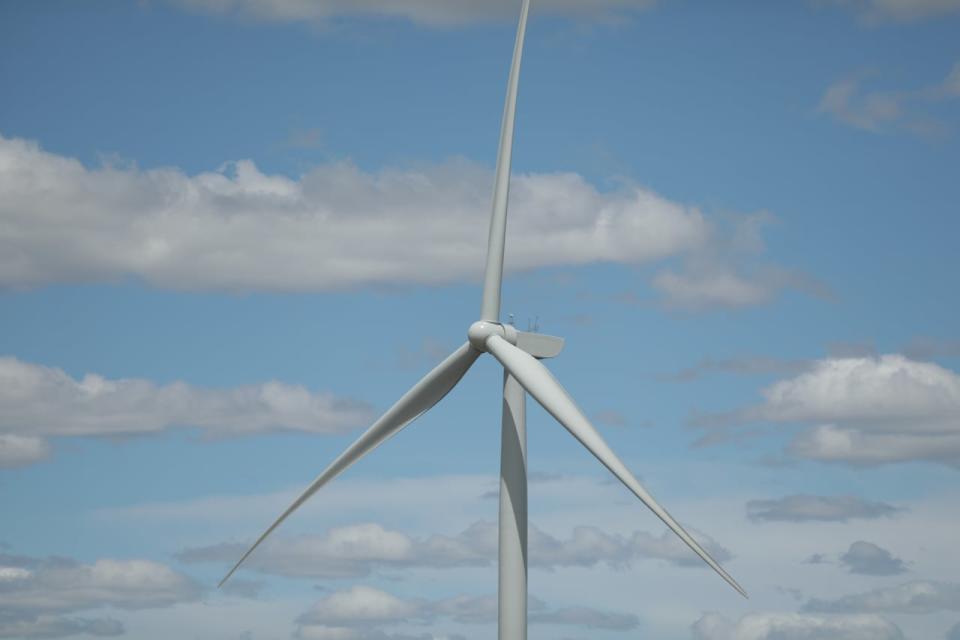Is more needed to protect migratory birds as N.S. expands land-based wind farms?

With Nova Scotia going all in on land-based wind farms to reduce reliance on burning fossil fuels for electricity, there are calls to do more to protect migrating birds from the spinning blades.
"We're talking billions of birds over the years funnelling on what they call the Atlantic Flyway. And we're putting more and more hazards in the way with these wind farms," said Tony Millard, president of the Nova Scotia Bird Society.
Millard is urging the province to require a range of measures including manufacturing blades in a colour other than white to help differentiate background, emitting frequencies to warn birds away, and using radar that would shut down wind farms if flocks approach.
Why Wedgeport Wind is under scrutiny
The project drawing the most scrutiny from regulators and advocates like Millard is a 13-tower, 80-megawatt wind farm approved for Comeaus Hill near Wedgeport in southwestern Nova Scotia. It is set to begin generating power late next year.
The wind farm is in the flight path of migrating birds crossing the Gulf of Maine and located between a nesting site for endangered roseate terns and a wildlife sanctuary.
"Wedgeport is particularly important for birds, and it poses very serious dangers," said John Kearney, an environmental researcher and industry consultant who tracks birds.
Wedgeport Wind is being developed by Elemental Energy of Vancouver in partnership with Stevens Wind and the Sipekne'katik First Nation.
Environment and Climate Change Canada has said it is likely the project will affect migratory birds, but there is insufficient information to assess the impact.
Developer must have management plan
The Nova Scotia government approved the project a year ago with a condition requiring developers to create an "adaptive management plan" with new mitigation measures and additional monitoring should the project harm resident and migratory birds and bats.
Wedgeport Wind is one of five onshore wind farms selected by the province to help meet its commitment that 80 per cent of electricity must come from renewable sources by 2030 when all of Nova Scotia Power's coal plants must close.
Kearney said putting protections in place for migratory birds — including radar, as Millard suggested — should be considered best practice in the industry.

Industry consultant John Kearney says radar that shuts down wind turbine blades when flocks approach is needed to protect migrating birds. He's optimistic the developer of the Wedgeport wind farm is taking the issue seriously. (Pat Callaghan/CBC)
"When you add up all the money that it costs to build a wind farm, all the potential money that can be made from a wind farm, this is just a normal cost of doing business," he said.
Elemental Energy declined an interview, but in a response to CBC News, the company said it has met the terms of the approval issued by the Nova Scotia Department of Environment and Climate Change.
That included a second year of bird and bat studies in 2023 and a wildlife management plan to ensure the wind farm meets the federal Migratory Birds Convention Act.
Its adaptive management plan has yet to be filed.
"While we have not made any commitments to bird deterrents or other mitigation measures noted by John Kearney, these measures will be considered should monitoring results demonstrate that there is an adverse effect to birds and bats associated with wind turbine operations," said Daniel Eaton, director of project development with Elemental.
Bird mortality studies
Kearney said the commitment leaves him optimistic, but he takes issue with Elemental Energy's prediction that its Wedgeport wind farm will kill a maximum 36 birds a year, saying the modelling is flawed.
Kearney carried out two-year bird mortality studies on a pair of Nova Scotia Power-owned wind farms: Digby Neck and Nuttby Mountain.
The utility released both to CBC News upon request.
At the 20-turbine Digby Neck wind farm, an estimated 286 birds were killed in the first year of operation in 2011, but the estimate plummeted to 29 when the lighting was extinguished. According to the study, it was believed lights may have attracted birds at night.

At Digby Neck an estimated 286 birds died during the first year of operation. The number of deaths plummeted the next year after lighting at the site was turned off. (Nova Scotia Power )
At the 22-turbine Nuttby Mountain wind farm in Colchester County, an estimated 76 birds died annually, based on an average of 3.47 per turbine, per year — below the Canadian average of 4.6 birds per turbine, per year.
Kearney said wind farms on south-facing peninsulas like Digby Neck and Wedgeport pose the greatest threat.
"My experience doing research on migration is that you can have huge numbers of birds on any particular morning. Not every morning, not most of the mornings, but on enough mornings that's going to happen a few times a year, that there's going to be tremendous numbers of birds going up those peninsulas. So what you don't want in that situation is a wind turbine."
Developer cleared for site prep
Nova Scotia's Department of Environment and Climate Change said the Wedgeport project is in good standing.
"The proponent has completed requirements necessary to begin site preparation and there are no issues with non-compliance or outstanding items associated with their environmental assessment. Other requirements remain in progress," spokesperson Kristin Matthews said in a statement to CBC News.

Wind turbines are not the biggest killer of birds, according to a 2017 estimate from the U.S. Fish and Wildlife Service. Cats were estimated to kill 2.4 billion birds annually, while birds striking glass buildings, vehicles and electrical lines are all estimated to kill tens of millions per year in the U.S. (Matt Duguid/CBC)
Last month, Environment Minister Tim Halman thanked Millard for bringing his concerns forward.
Millard said in an interview the province has an opportunity to make a difference as it embraces clean energy and more wind turbines.
"We accept they're coming," he said. "We're trying to get collision mitigation in place so we can become world leaders in reducing the deaths of these birds."
MORE TOP STORIES

